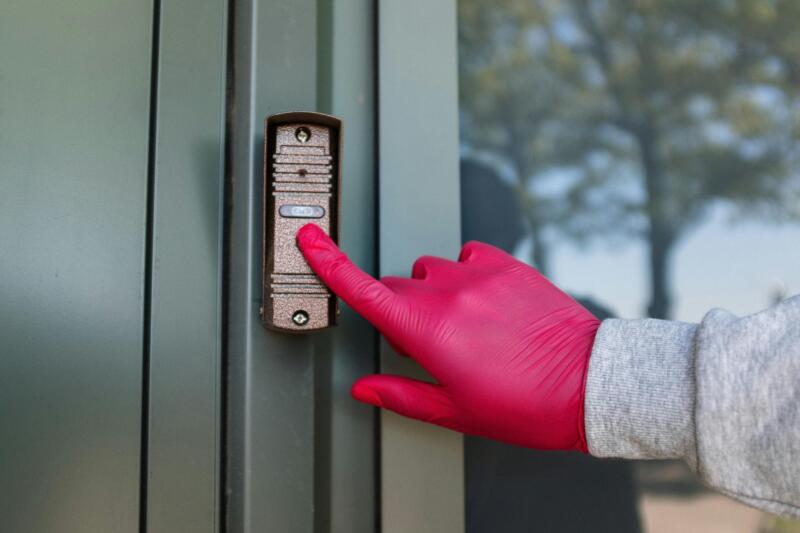Types of Hearing Aids
There are several types of hearing aids available, each designed for different degrees of hearing loss, lifestyle preferences, and budget. Understanding these options is key to finding the right fit for you.
1. Behind-the-Ear (BTE) Hearing Aids
BTE hearing aids are worn behind the ear and are connected to a custom ear mold that sits inside the ear canal. These hearing aids are suitable for a wide range of hearing loss levels, from mild to severe. BTE aids are also known for their durability and easy-to-handle controls, making them ideal for individuals with dexterity issues.
2. In-the-Ear (ITE) Hearing Aids
ITE hearing aids fit inside the outer ear and are custom-made to match the shape of your ear. They are generally used for mild to moderate hearing loss. Because they are smaller and more discreet than BTE aids, they may be a good choice for those who prefer a less noticeable option.
3. In-the-Canal (ITC) and Completely-in-the-Canal (CIC) Hearing Aids
ITC and CIC hearing aids are even smaller than ITE aids and are designed to fit deeper into the ear canal. These options are highly discreet and are best suited for mild to moderate hearing loss. However, they may not be suitable for individuals with more severe hearing loss or dexterity challenges.
4. Receiver-in-Canal (RIC) Hearing Aids
RIC hearing aids are similar to BTE models but are even more discreet. They have a small receiver that sits in the ear canal, and the rest of the device sits behind the ear. RICs offer excellent sound quality and are comfortable for many users. They are suitable for a variety of hearing loss levels.
5. Bone Conduction Hearing Aids
These hearing aids bypass the eardrum entirely and transmit sound directly to the inner ear through the bones of the skull. Bone conduction hearing aids are ideal for individuals with conductive hearing loss or those who cannot wear traditional hearing aids due to medical conditions.
Key Features to Consider
When selecting a hearing aid, it’s important to think about the features that will best meet your needs. Here are some key factors to consider:
1. Degree of Hearing Loss
Hearing aids are designed for different levels of hearing loss, ranging from mild to profound. A professional hearing test conducted by an audiologist will help determine the degree of your hearing loss and guide you toward the best hearing aid option.
2. Style and Comfort
Comfort is essential, especially if you plan on wearing your hearing aids for extended periods. Consider the size and design of the hearing aid, and choose one that fits comfortably in or around your ear. Some people prefer smaller models for aesthetic reasons, while others opt for larger models with more features or easier handling.
3. Technology Features
Modern hearing aids come with advanced technology that can significantly enhance your listening experience. Some features to look for include:
- Directional Microphones: These help focus on sounds coming from specific directions (like someone speaking in front of you), making it easier to hear in noisy environments.
- Noise Reduction: Hearing aids with noise reduction technology can filter out background noise, improving speech clarity and reducing distractions.
- Bluetooth Connectivity: Some hearing aids can connect to smartphones, TVs, and other devices via Bluetooth, allowing you to stream audio directly into your hearing aids.
- Rechargeability: Many newer models offer rechargeable batteries, eliminating the need for frequent battery changes and providing greater convenience.
4. Battery Life
Battery life is another important consideration. If you choose a model with disposable batteries, you may need to replace them every few days or weeks, depending on the usage. Rechargeable models offer the convenience of not needing battery replacements but require regular charging.
5. Sound Quality
The quality of sound that a hearing aid delivers is crucial. Look for hearing aids that provide clear, natural sound and minimize distortion. Many high-end models offer customizable sound profiles to suit individual preferences.
6. Water and Dust Resistance
If you live an active lifestyle or work in an environment with dust or moisture, you may want to choose a hearing aid with water and dust resistance. This ensures that the device can withstand daily wear and tear and maintain optimal performance.
Cost and Insurance
The cost of hearing aids can vary widely depending on the type, features, and brand. In general, hearing aids can range from a few hundred dollars to several thousand dollars per device. While hearing aids can be a significant investment, many find that the benefits far outweigh the cost.
When considering the cost, it’s also important to check with your insurance provider. Many insurance plans cover at least part of the cost of hearing aids, especially if they are prescribed by a doctor. Additionally, some hearing aid providers offer financing options or payment plans to make the purchase more affordable.
Choosing the Right Hearing Aid for You
With so many options available, selecting the right hearing aid can feel overwhelming. Here are some steps to help guide your decision:
- Consult an Audiologist: Schedule an appointment with an audiologist to discuss your hearing needs, undergo a hearing test, and explore available options.
- Consider Your Lifestyle: Think about the environments you spend the most time in (e.g., quiet home, noisy restaurants, outdoor activities) and choose a hearing aid that suits your lifestyle and specific challenges.
- Try Before You Buy: Many hearing aid providers offer trials or demonstrations. Take advantage of this opportunity to test different models and see which one feels most comfortable and effective for your needs.
- Think Long-Term: Remember, hearing aids are a long-term investment in your health and well-being. Choose a model that you will feel comfortable wearing for years to come.
Conclusion
Finding the perfect hearing aid involves a combination of understanding your hearing needs, evaluating the features and costs of different models, and consulting with an expert to help you make the best choice. By considering factors such as hearing loss severity, style preferences, and technology features, you can choose a hearing aid that improves your ability to hear clearly and enjoy daily activities. Whether you’re seeking a discreet, comfortable option or a high-tech device with Bluetooth connectivity, the right hearing aid can enhance your quality of life and help you stay connected with the world around you.
Eligible Highlights:
- Types of Hearing Aids: Understand the different styles of hearing aids, including BTE, ITE, and bone conduction options.
- Key Features: Consider factors such as degree of hearing loss, technology features, and comfort when choosing a hearing aid.
- Sound Quality and Battery Life: Prioritize hearing aids that offer clear sound and long-lasting battery life.
- Consult an Audiologist: Schedule a hearing test to help determine the best hearing aid for your needs.
- Insurance and Financing: Check your insurance for coverage and explore payment options to make hearing aids more affordable.
By carefully considering your options and consulting with an expert, you can find the hearing aid that fits your needs and provides you with the best hearing experience possible.
Author
-

Megan Flores has a deep love for writing about homes, health, and career inspiration. With her rich storytelling skills and attention to detail, she creates content that resonates with readers. Outside of writing, Megan enjoys redecorating her apartment, exploring city parks, and planning her next travel adventure.






